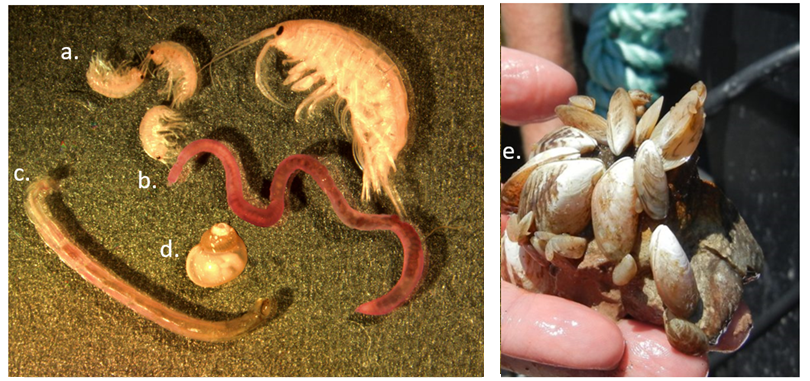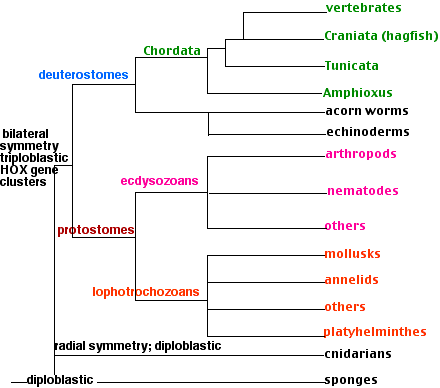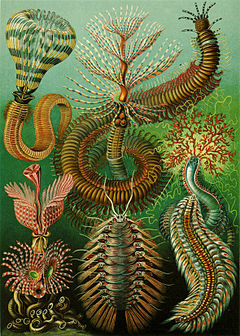Topic invertebrate traits: Delve into the intriguing universe of invertebrates, a realm where spineless creatures exhibit a kaleidoscope of remarkable traits, shaping our natural world in unique ways.
Table of Content
- What are the characteristics of invertebrate traits?
- Defining Characteristics of Invertebrates
- Classification and Diversity of Invertebrates
- Anatomical and Structural Features
- Reproductive and Developmental Strategies
- Nervous System and Sensory Organs
- Locomotion and Movement in Various Environments
- YOUTUBE: Characteristics, Classification, and Examples of Invertebrates
- Adaptations for Survival and Defense Mechanisms
- Role in Ecosystems and Environmental Impact
- Human Interaction and Economic Importance
- Current Research and Future Directions in Invertebrate Biology
What are the characteristics of invertebrate traits?
Characteristics of invertebrate traits include:
- Lack of backbone: Invertebrates do not have a backbone or a vertebral column.
- Variety of body plans: Invertebrates exhibit diverse body plans, which can range from simple to complex.
- External exoskeleton: Some invertebrates have an external exoskeleton made of chitin or other materials that provides support and protection.
- Soft bodies: Many invertebrates have soft bodies that lack a rigid structure.
- Segmentation: Some invertebrates, such as insects, exhibit segmentation of their body, which allows for specialization of different body regions.
- Efficient locomotion: Invertebrates have evolved various mechanisms for movement, including crawling, swimming, and flying.
- Sensory capabilities: Invertebrates possess a range of sensory organs, such as antennae, eyes, and chemoreceptors, to detect the environment.
- Reproduction: Invertebrates reproduce in a variety of ways, including sexual and asexual reproduction, and exhibit diverse reproductive strategies.
- Ecological roles: Invertebrates play important roles in ecosystems as decomposers, pollinators, predators, and prey.
- Wide range of species: The majority of animal species are invertebrates, representing a vast and diverse group of organisms.
READ MORE:
Defining Characteristics of Invertebrates
Invertebrates, encompassing a vast majority of animal species, are defined by their lack of a vertebral column. This diverse group includes animals from various habitats, ranging from deserts and rainforests to the deepest oceans.
- Absence of Backbone: The primary characteristic that distinguishes invertebrates from vertebrates is the absence of a spinal column.
- Body Symmetry: Invertebrates exhibit various forms of symmetry - radial, bilateral, or none. For instance, snails and sea snails show asymmetric body structures.
- Size and Diversity: Invertebrates range from microscopic organisms to large species like the colossal squid. They include arthropods, annelids, mollusks, echinoderms, and many more.
- Habitats: Invertebrates thrive in diverse environments, including extreme conditions like frozen Antarctic regions or high atmospheric layers.
- Reproduction: Most invertebrates reproduce by fission, a process involving the division of a single organism into two or more parts and the regeneration of those parts to separate organisms.
- Ecological Roles: Invertebrates play crucial roles in ecosystems, such as pollination, decomposition, and nutrient recycling.
- Exoskeletons: Many invertebrates, especially arthropods, possess an exoskeleton for protection and support.
Each invertebrate group, such as Porifera, Cnidaria, Platyhelminthes, Arthropoda, and others, has unique characteristics and adaptations, contributing to the rich diversity of this animal classification.

Classification and Diversity of Invertebrates
Invertebrates, which make up a significant portion of the animal kingdom, are classified into various groups based on their distinctive characteristics. This classification helps in understanding the immense diversity within the invertebrate world.
- Arthropods: The largest group of invertebrates, encompassing insects, spiders, and crustaceans like shrimp and crabs. They are known for their segmented bodies and exoskeleton.
- Mollusks: This group includes snails, octopi, and clams, characterized by a soft body, usually enclosed in a calcium carbonate shell.
- Annelids: Comprising earthworms and leeches, these segmented worms play vital roles in soil aeration and nutrient cycling.
- Echinoderms: Starfish and sea urchins fall under this category, known for their radial symmetry and tube feet.
- Porifera: Commonly known as sponges, they are simple multicellular organisms without specialized tissues or organs.
- Cnidaria: This group includes jellyfish and corals, which possess specialized cells called cnidocytes for capturing prey.
- Platyhelminthes: Also known as flatworms, these are bilateral, unsegmented worms with a simple digestive system.
- Nematodes: These are cylindrical parasites found in various ecosystems, known for their simple body structure.
Each of these groups exhibits unique adaptations and plays essential roles in various ecosystems. Their diversity highlights the evolutionary complexity and ecological significance of invertebrates in the natural world.
Anatomical and Structural Features
Invertebrates, known for their lack of a vertebral column, exhibit a diverse array of anatomical and structural features. These features reflect their adaptation to a wide range of environments and lifestyles.
- Body Symmetry: Invertebrates display various forms of body symmetry, including radial, bilateral, or asymmetrical designs, depending on the species.
- Exoskeletons: Many invertebrates, particularly arthropods, possess exoskeletons made of chitin, providing structural support and protection.
- Size Variation: Invertebrate sizes vary widely, from microscopic organisms like protozoans to larger species like the colossal squid.
- Segmentation: Some invertebrates, like annelids and arthropods, feature segmented bodies, aiding in movement and flexibility.
- Sensory Organs: Invertebrates have adapted diverse sensory organs, such as antennae in insects or tentacles in cnidarians, for environmental interaction.
- Respiratory Systems: The respiratory mechanisms in invertebrates vary, from simple diffusion through the skin to complex gill or tracheal systems.
- Reproductive Strategies: Invertebrates employ a range of reproductive methods, from sexual reproduction with diverse larval stages to asexual means like fission.
- Locomotion: Modes of locomotion are diverse, including crawling, swimming, and flying, adapted to the invertebrate"s habitat and lifestyle.
These anatomical and structural features highlight the incredible adaptability and diversity of invertebrates, allowing them to inhabit virtually every ecosystem on Earth.
Reproductive and Developmental Strategies
Invertebrates exhibit a wide array of reproductive and developmental strategies, reflecting their diverse lifestyles and habitats. These strategies range from simple asexual reproduction to complex life cycles involving multiple stages and hosts.
- Asexual Reproduction: Many invertebrates, such as certain sponges and flatworms, reproduce asexually through mechanisms like budding or fragmentation, allowing them to quickly colonize environments.
- Sexual Reproduction: This is common among many invertebrates, including insects and mollusks, often involving complex mating behaviors and the production of eggs or larvae.
- Life Cycles: Some invertebrates, like certain flatworms and roundworms, have complex life cycles that may involve multiple hosts or stages of development, adapting to their parasitic lifestyles.
- Larval Stages: Many marine invertebrates, such as echinoderms and some mollusks, have planktonic larval stages that disperse widely before settling down and metamorphosing into their adult forms.
- Regeneration: Some invertebrates, like starfish, have remarkable regenerative abilities, allowing them to regrow lost body parts or, in some cases, entire organisms from fragments.
These reproductive and developmental strategies enable invertebrates to adapt to a wide range of ecological niches and play vital roles in their respective ecosystems.
Nervous System and Sensory Organs
Invertebrates showcase a remarkable diversity in their nervous systems and sensory organs, adapted to their varied environments and modes of life.
- Simpler Nervous Systems: Simpler invertebrates, like sponges, lack a true nervous system, relying on a more primitive set of reactions to environmental stimuli.
- Centralized vs. Diffuse Nervous Systems: More complex invertebrates, such as arthropods, possess a centralized nervous system, while others, like cnidarians (jellyfish), have a more diffuse nerve net.
- Sensory Organs: Invertebrates are equipped with various sensory organs. Cephalopods like octopuses have well-developed eyes, annelids (segmented worms) use their skin for respiration and sensing, and arthropods (insects, spiders) have complex sensory organs, including antennae and compound eyes.
- Neural Complexity: Some invertebrates, like mollusks and arthropods, exhibit surprising levels of neural complexity, enabling sophisticated behaviors and interactions with their environment.
- Adaptations for Survival: The nervous systems and sensory organs of invertebrates are highly adapted to their ecological niches, allowing for effective communication, predation, and defense mechanisms.
These varied systems underscore the evolutionary ingenuity of invertebrates, enabling them to thrive in almost every habitat on Earth.

Locomotion and Movement in Various Environments
Invertebrates exhibit an extraordinary range of locomotion and movement strategies, allowing them to thrive in diverse environments.
- Crawling: Many terrestrial invertebrates like worms and snails move by crawling. Earthworms, for example, use their segmented bodies to burrow and navigate through soil.
- Swimming: Aquatic invertebrates have adapted to swimming. Jellyfish use a jet propulsion method, while cephalopods like squids and octopuses propel themselves with jet-like siphons.
- Flying: Some invertebrates, such as many insects, have developed the ability to fly. This mode of locomotion is highly efficient for traveling long distances and escaping predators.
- Tube Feet: Echinoderms like starfish use hundreds of tiny tube feet for movement, allowing them to adhere to surfaces and move slowly.
- Amoeboid Movement: Single-celled invertebrates like amoebas move using pseudopodia, extending their cell membrane to navigate their environment.
- Gliding: Certain mollusks, like the gliding snail, use a muscular foot mechanism to glide over surfaces, secreting mucus to facilitate movement.
These diverse locomotion methods are perfectly suited to the ecological niches these creatures inhabit, demonstrating the adaptability and evolutionary ingenuity of invertebrates.
Characteristics, Classification, and Examples of Invertebrates
\"Discover the fascinating world of invertebrates and unlock the secrets of their unique characteristics and adaptations in this captivating video. Get ready to be amazed by the incredible diversity and beauty of these spineless creatures!\"
An Introduction to Invertebrates
\"Embark on an exciting journey of knowledge and wonder with this engaging introduction video. Whether you\'re a curious beginner or an avid learner, this video will provide you with a solid foundation to delve deeper into the subject. Don\'t miss out on this educational adventure!\"
Adaptations for Survival and Defense Mechanisms
Invertebrates have evolved a multitude of adaptations and defense mechanisms to survive in various environments, showcasing the diversity and complexity of life.
- Camouflage: Many invertebrates, like certain insects and cephalopods (e.g., octopuses), use camouflage to blend into their surroundings, making it difficult for predators to spot them.
- Chemical Defenses: Some invertebrates, such as certain types of mollusks and insects, produce toxins or unpleasant chemicals to deter predators.
- Physical Defenses: The exoskeletons of arthropods, like crabs and beetles, provide a hard protective layer against physical attacks. Additionally, some, like the porcupine sea urchin, have spines for defense.
- Mimicry: Mimicry is used by some invertebrates, where they imitate the appearance of other, more dangerous animals to avoid predation.
- Behavioral Strategies: Invertebrates like certain squids and octopuses can escape predators by releasing ink, creating a smokescreen to cover their escape.
- Regeneration: Starfish and some other invertebrates can regenerate lost limbs, an effective way to recover from predator attacks.
These strategies reflect the evolutionary innovation of invertebrates, enabling them to thrive in environments ranging from the ocean depths to forest canopies.

Role in Ecosystems and Environmental Impact
Invertebrates play vital roles in ecosystems and have a significant environmental impact, contributing to the balance and sustainability of our planet.
- Pollination: Many insects, particularly bees and butterflies, are crucial pollinators for a wide range of plants, including crops essential for human consumption.
- Decomposition: Invertebrates like earthworms and certain insects contribute to the decomposition process, breaking down organic matter and enriching soil fertility.
- Food Web: Invertebrates serve as a crucial food source for various animals, supporting the biodiversity and balance of ecosystems. For example, many birds and fish rely heavily on invertebrates as their primary food source.
- Biological Control: Some invertebrates help control pest populations, aiding in the maintenance of healthy crops and gardens.
- Aquatic Ecosystems: Aquatic invertebrates like corals play a key role in maintaining the health of marine ecosystems, providing habitats and food for numerous marine species.
- Environmental Indicators: The presence or absence of certain invertebrates can indicate the health of an environment, making them valuable in monitoring ecosystem changes and pollution levels.
Invertebrates, through these roles, not only sustain ecological balance but also directly and indirectly support human life and economies.
Human Interaction and Economic Importance
Invertebrates interact with humans in a variety of ways, offering both benefits and challenges, and play a significant role in economies worldwide.
- Agricultural Impact: Insects like bees are crucial for pollinating crops, enhancing food production, while others can be agricultural pests, impacting crop yields negatively.
- Medical and Scientific Research: Invertebrates such as fruit flies and nematodes are key model organisms in genetic and medical research, contributing to our understanding of fundamental biological processes and diseases.
- Environmental Indicators: The presence or absence of certain invertebrate species can indicate the health of an ecosystem, aiding in environmental monitoring and conservation efforts.
- Resource Production: Many invertebrates like mollusks (e.g., oysters, clams) are sources of food and materials (like pearls) for humans, contributing to the fishing and aquaculture industries.
- Disease Transmission: Some invertebrates, particularly certain species of mosquitoes and ticks, are vectors for diseases that can affect humans and livestock.
- Biodiversity and Ecosystem Services: Invertebrates play vital roles in ecosystems, such as soil aeration by earthworms and nutrient cycling, crucial for maintaining biodiversity and ecosystem health.
Understanding and managing our interactions with invertebrates is key to preserving ecological balance and harnessing their economic potential.

READ MORE:
Current Research and Future Directions in Invertebrate Biology
The field of invertebrate biology is dynamic and evolving, with current research focusing on diverse areas and paving the way for future scientific exploration.
- Genetic and Molecular Studies: There is a growing interest in understanding the genetic makeup of invertebrates. This includes mapping genomes and studying gene expression to unravel evolutionary histories and functional adaptations.
- Environmental Adaptations: Research continues into how invertebrates adapt to various environmental stressors, including climate change, habitat loss, and pollution. This research is crucial for conservation efforts.
- Behavioral Ecology: Investigating the behavioral patterns of invertebrates, their interactions within ecosystems, and their roles in food webs are key research areas, providing insights into ecosystem dynamics.
- Biomedical Applications: Invertebrates are being studied for their potential in biomedical fields, including drug discovery and understanding disease mechanisms. For example, the unique properties of certain venomous invertebrates are being explored for therapeutic uses.
- Biodiversity and Taxonomy: With many invertebrate species yet to be discovered, there is an ongoing effort in taxonomy to identify and classify these species. This helps in understanding the full scope of biodiversity and its conservation.
- Impact of Invasive Species: Research is being conducted on the impact of invasive invertebrate species on native ecosystems and methods to control their spread.
These research directions underscore the importance of invertebrates in scientific discovery and their significance in maintaining ecological balance and advancing human knowledge.
In exploring the remarkable traits of invertebrates, we uncover the astounding diversity and adaptability of life. Their roles, from ecological balance to human interaction, highlight an intricate world, urging us to appreciate and protect these spineless marvels.



:max_bytes(150000):strip_icc()/tunicates-5c86a0cdc9e77c00010c2253.jpg)










